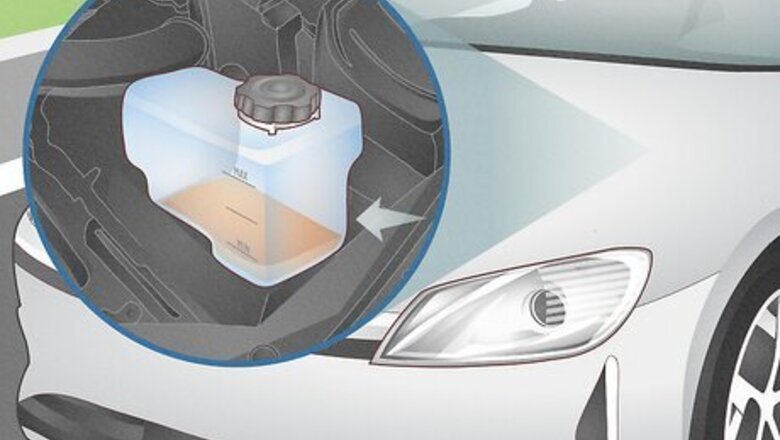
views
Common Causes of an Overheating Engine
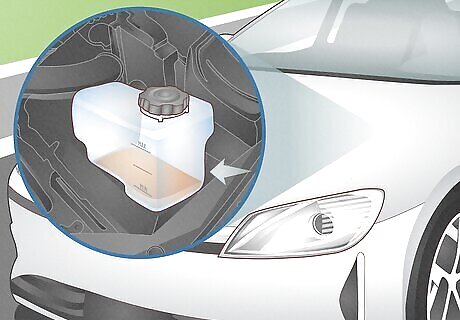
Insufficient coolant A vehicle's coolant system circulates antifreeze solution through tubes, which then run over the engine to keep it cool. When there's little to no coolant, your engine continues to heat as it runs, eventually leading to engine damage. Similarly, insufficient coolant can be caused by a leak in the hose that goes into the overflow tank, radiator cap, or the tank itself. Look for signs of puddles beneath your car or bubbles in the hoses. Coolant may be blue, orange, or pink. How to fix it: If you're an experienced mechanic, start by locating the coolant leak. Once you identify the leak, replace the damaged part. This may be a cracked hose ($400-$600), radiator cap ($10), or reservoir tank ($10-$100). Once you’ve swapped the parts, add coolant to the “maximum fill line” on the reservoir. If you're not familiar with the coolant system, take your car to an auto shop for repairs.
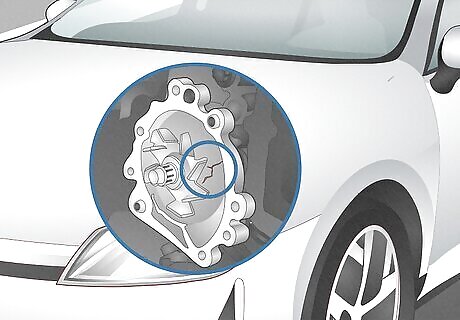
Broken water pump A water pump pushes the coolant into the engine and radiator to keep the engine at a safe temperature. Coolant struggles to run through smoothly when this fails, causing the engine to overheat. Similarly, listen for a squealing or whining noise, as this can be another indication of a water pump issue. How to fix it: In most cases, you'll want to hire a mechanic for this. Here's an overview of what they'll do: drain the cooling system and loosen the alternator, other accessories, and drive belts. Then, remove any brackets and hoses attached to or blocking the water pump. Clean the mounting surface on the engine with a rag, and install the pump using a socket wrench. Reconnect all hoses, brackets, and accessories. A replacement can cost $400 to $1,000.
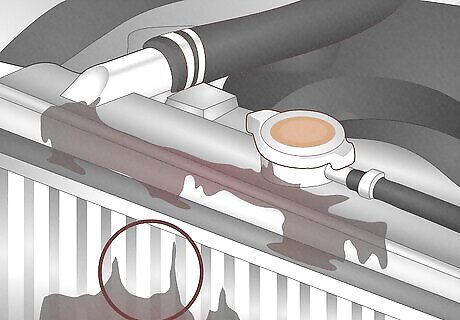
Radiator issues Radiators work with the vehicle's water pump and thermostat to keep the cooling system functioning. When one fails, the others do, too. Blocked passages and damaged or bent radiator finds can make it more difficult for the system to cool down hot oil that passes through the engine. Leaks, rust, and gunk can contribute to a radiator issue. How to fix it: If there’s a leak or issue with other components, you'll need to replace the radiator hoses, pump, or thermostat to fix the radiator. If there’s rust or similar obstructions, flush the radiator with a radiator cleaner. This will work as an eliminator and protectant against rust. A coolant flush can cost between $35 to $100.
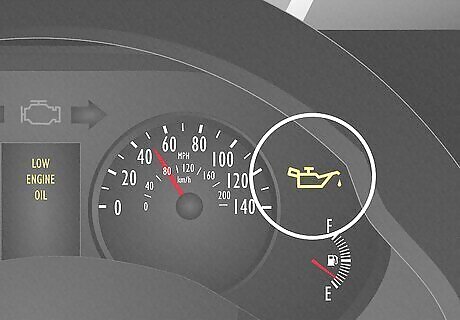
Low engine oil Does your dashboard show an old oil canister with a leak? This is a sign that your vehicle has little to no oil in the engine. Driving with low oil pressure means the engine's moving parts rub against each other without lubrication. The constant friction creates more wear on the parts and excess heat, which can cause the engine to overheat when left unaddressed. How to fix it: Add more engine oil if the oil dipstick is below the “low” line. Replace the oil filter when you change your engine’s oil since the filter can accumulate dirt and debris. Loosen the oil filter with a wrench, remove, and replace. Engine oil costs $35 to $75, while filters cost $40 to $130.
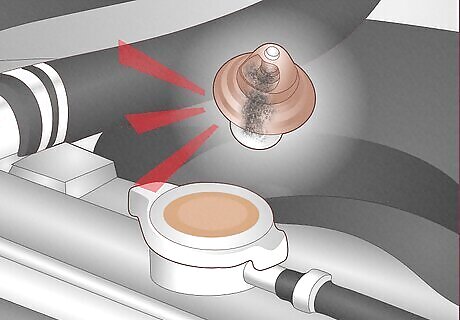
Thermostat failure Attached to the radiator hose is a thermostat that prevents coolant from going through the radiator until the engine reaches an appropriate temperature. The entire system may be misread if the thermostat is faulty. Look for signs of erratic temperature changes, incorrect readings, or irregular sounds from the engine. How to fix it: Hire a mechanic to replace a bad thermostat with a new one. They'll remove the clamp and pull off the hose. Then, they'll remove the bolts that house the thermostat in place, lift it out, install a new gasket, and secure the new thermostat by tightening the bolts. A car thermostat replacement can cost $200 to $500.

Faulty belts and hoses Any cracks, bulges, bends, glassy surfaces, or abrasive damage on the vehicle's belts and hoses can not only cause an engine to overheat but also affect your power steering. How to fix it: For cracks and leaks, use a flathead screwdriver to remove the hose clamps on either side of the hose. Use the clamps for the new hose and replace it. For wear and tear on a belt, loosen and unthread the belt by releasing the tensioner with a ratchet. Then, install a new belt by slipping it into position and tightening the tensioner. If you're not comfortable with this kind of work, take your car to a shop. A hose replacement can cost $400, while a new belt can cost around $60.
Signs of an Overheating Engine

Smoke or steam A classic sign of an overheating car is a large cloud of white smoke or lots of steam seeping out from under the hood. This results from faulty wire casings, heated residues on the engine block, and fluid leaks. Black smoke means too much fuel has burned or an air filter is clogged.
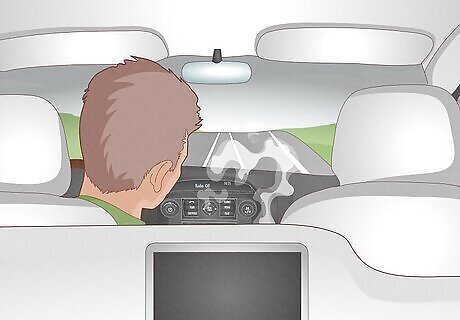
Burnt or sweet smell Have you ever gone for a drive and smelled burnt tar despite a lack of construction? A bitter, burnt smell from the engine is a sign of a fuel leak, while a sweet, burnt smell results from leaking coolant.
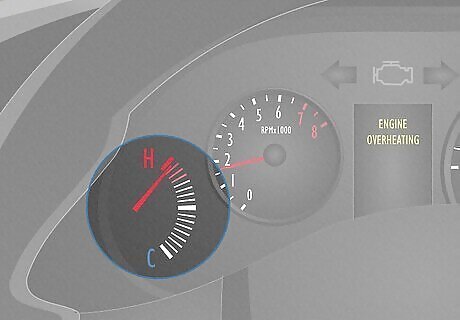
High temperature reading Check the temperature gauge on your dashboard to get a reading of the temperature of the coolant in the vehicle's engine. Once your vehicle warms up, the temperature gauge should hang between "C" (cold) and "H" (hot). If the reading is in the red or near the H, your engine is overheating.
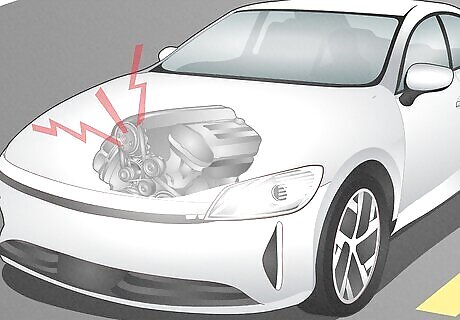
Strange engine noises Shortly before your engine overheats, you may hear a thumping or ticking sound. These noises indicate system failures in the engine, so pull over as soon as it is safe.

Reduced engine power You may notice a lack of response in acceleration or, in some vehicles, a "Reduced Engine Power Mode" light. While there are many reasons for this light to appear, one cause can be when the engine overheats due to issues with the cooling systems. You may also see the "Check Engine Light" appear on your dashboard if your vehicle doesn't have a "Reduced Engine Power Mode" light.
What to Do When Your Engine Overheats
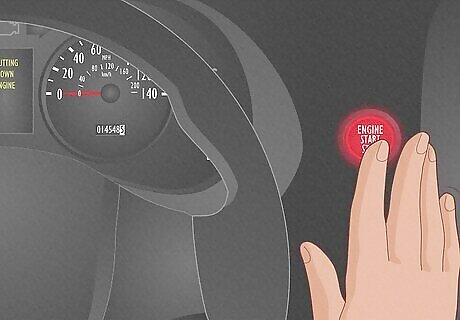
Shut the engine off as soon as possible. Pull over into a safe place and immediately shut the car down. Automotive Specialist Ed Beery says, "Overheating is the main cause of catastrophic engine damage," and recommends stopping as soon as it is safely possible to do so. Allow the car to sit for at least 30 minutes so the engine can cool down. Opening the hood while the engine is still hot may cause injury. If possible, avoid driving to limit the pressure that develops in the hydraulic cylinder. Additional pressure may cause your engine to explode.
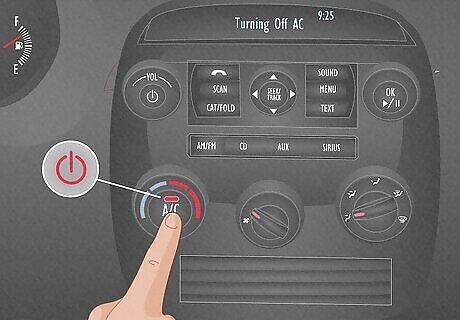
Turn off the AC and crank up the heat. Beery recommends turning on the heater or rolling the windows down on a hot day to move some of the engine heat out. Turning the AC off is important, as it puts additional demand on the engine.
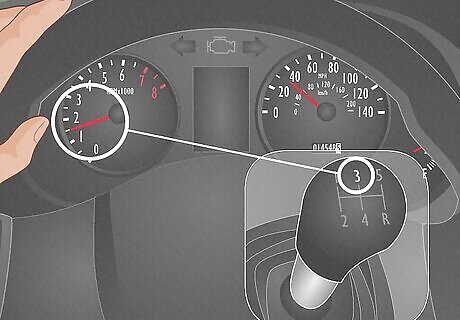
Reduce the engine's load. A vehicle's engine load refers to how much power it has to carry you from Point A to Point B. The more load the vehicle has to carry, the more strain it puts on the engine. Reduce your speed and shift into a lower gear to reduce RPMs. RPMs refers to Revolutions per Minute, which measure how fast the engine is spinning. The higher the RPMs, the more fuel burns. If possible, avoid driving up hills to reduce the loads on the engine, too.
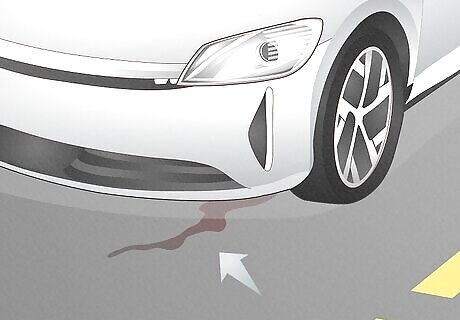
Inspect for leaks and add more fluids if necessary. "Low oil and low coolant levels can both lead to overheating," Beery explains. Look for signs of puddling beneath the car, near the head gasket seals, or hoses near the coolant tank and engine. If you don't see a puddle, check your fluid levels by inspecting the dipstick under the hood or the maximum fill line on the coolant reservoir. If either of these is low, top it off with extra fluid. After refilling the vehicle, wait to drive off. Allow the coolant to sit for 10 to 15 minutes before starting the car. If possible, drive straight to a trusted mechanic shop so they can fix the problem.
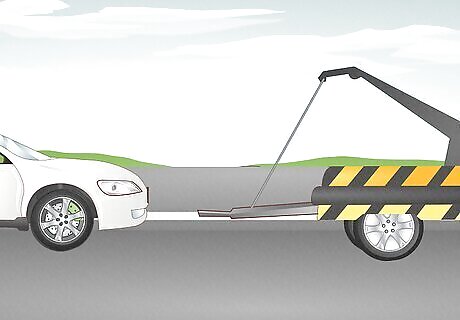
Call for a tow. In a situation where driving is no longer an option, don't panic. Instead, call a local towing company or AAA to haul your car to the nearest reliable auto shop to avoid further damage.
How to Prevent Overheating
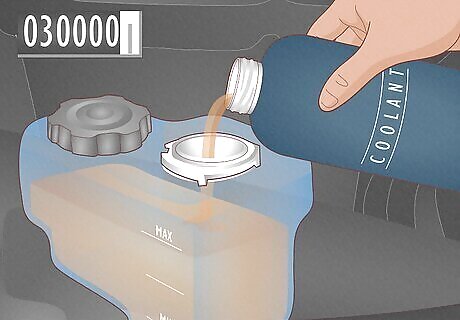
Add coolant every 30,000 miles. Coolant is essential to regulate your engine's temperature. While the frequency you need to top it off may vary depending on the car manufacturers, generally, you want to check the coolant at least twice a year before the summer and winter. To check your coolant levels, ensure the engine is cool. Open the radiator cap in front of the engine; your level is too low if you can't see coolant at the top. Coolant should reach the "fill" line on the overflow tank.
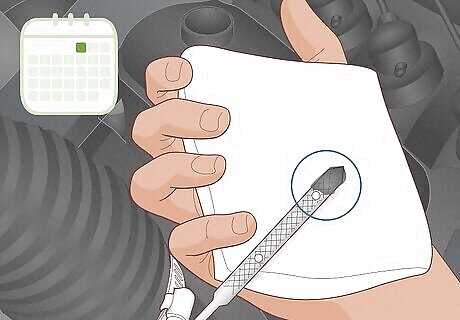
Check engine oil levels once a month. While oil changes are recommended every 3,000 miles, stay ahead of any potential issues by checking the levels once a month. To check the oil level allow the car to sit on level ground for at least 5 minutes. Remove the dipstick next to the engine block. Two small dots are on the end of most dipsticks; one represents the maximum fill line, while the other refers to the minimum. If the oil is at the minimum, it's time to add oil to the car. If the oil looks black or dark, it’s time for an oil change.
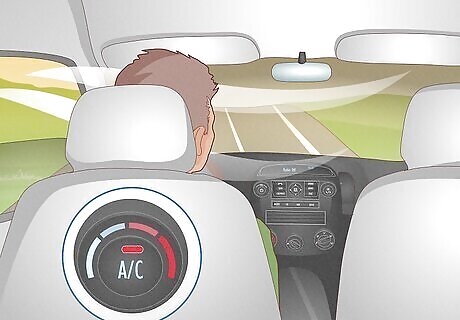
Limit AC usage on sweltering days. While there's nothing better than the cool embrace of the AC at the peak of the summer, cars are more prone to overheating during this time of year. Why? Well, that's because the car is surrounded by rising heat from asphalt, the engine, and sunbeams all day. Periodically shut the AC off and open all the windows to reduce the load on the engine. It may be unbearable, but avoiding spending hundreds or thousands to repair an engine is worth it.


















Comments
0 comment